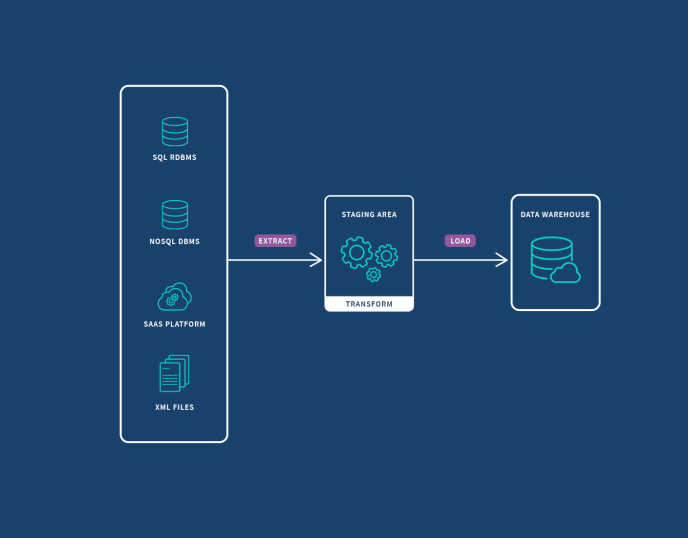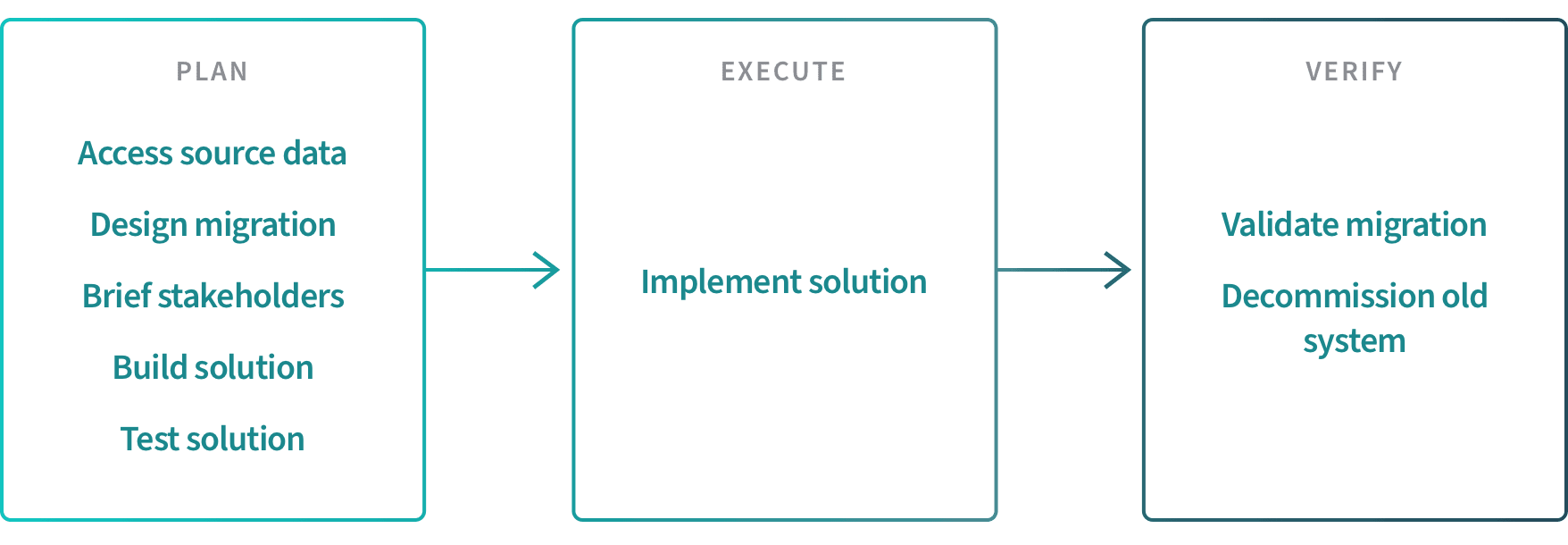5 Types of Data Migration
Your specific business requirements will determine the type of data migration process you undertake. Some projects, such as transferring to a new CRM system, will require you to involve teams which rely on that application. Others, like moving from one database vendor to another, can happen without involvement of the rest of the business.

Database migration can refer to either moving data from one database vendor to another, or to upgrading your database software to a newer version. The data format can vary between vendors so a transformation process may be required. In most cases, a change in database technology should not affect the application layer but you should definitely test to confirm.
Storage migration involves transferring data from an existing repository to another, often new repository. The data usually remains unchanged during a storage migration. The goal is typically to upgrade to more modern technology which scales data more cost-effectively and processes data faster.
Business process migration involves the transfer of databases and applications containing data related to customers, products, and operations. Data often requires transformation as it moves from one data model to another. These projects are usually triggered by a company reorganization, merger or acquisition.
Application migration refers to moving a software application such as an ERP or CRM system from one computing environment to another. The data usually requires transformation as it moves from one data model to another. This process most often occurs when the company decides to change to a new application vendor and/or involves transferring from on-premises to a public cloud or moving from one cloud to another.
Cloud migration involves moving data, applications, or other business elements to a cloud computing environment such as a cloud data warehouse. This process can go from a locally hosted data center to the public or from one cloud platform to another. The “cloud exit” process involves migrating data or applications off of the public cloud and back onto an on-premises data center.

















































